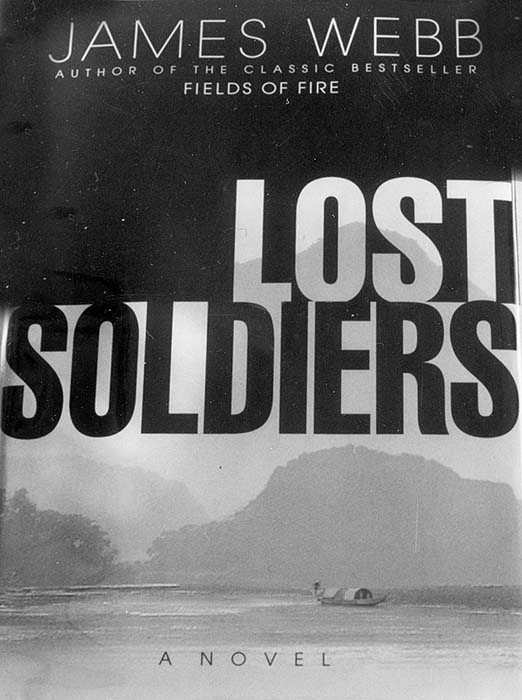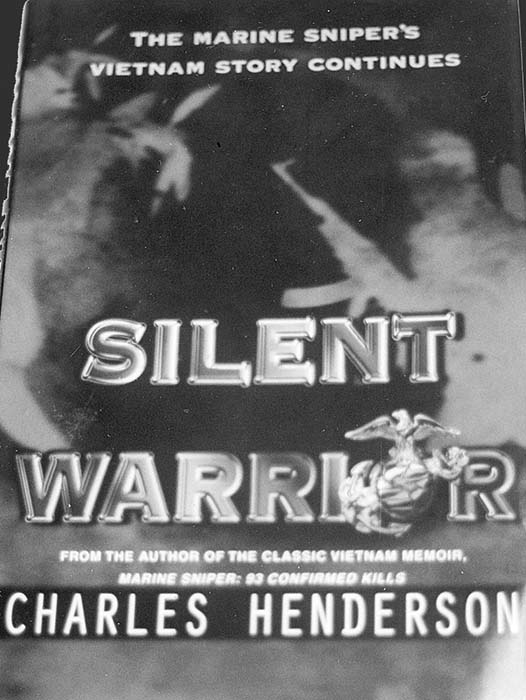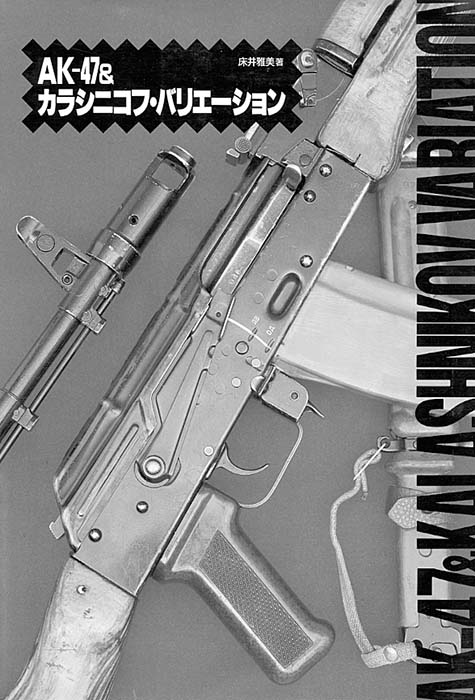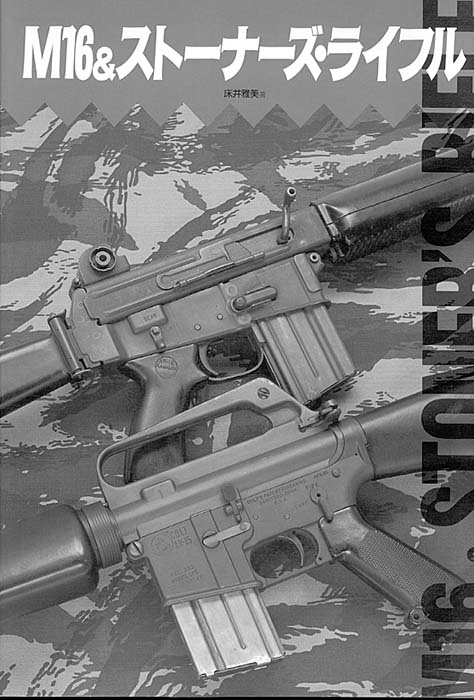By Lee Arten
Lost Soldiers
By James Webb
ISBN 0-553-80214-3
A Bantam Book
Bantam Books
1540 Broadway, New York, New York
$25 US $38 Canadian
Reviewed by Lee Arten

James Webb served as Secretary of the Navy during the Reagan Administration and as an Assistant Secretary Of Defense. He was also a decorated combat Marine in Vietnam. He knows war and politics. Lost Soldiers deals with both.
The book is set in present-day Vietnam. Protagonist Brandon Condley, a former Marine with five years of combat in Vietnam, found Asia more congenial than the United States after the war. He drifted around Asia, working for the CIA, and as a security agent for private companies. As the book opens Condley has come back to Vietnam to assist Hanson Muir, a forensic anthropologist, in retrieving the remains of US soldiers lost during the war.
Those are some of the lost soldiers referred to in the title. Condley and his cyclo driver, Dzung, a former South Vietnamese soldier and war hero, are two of the others. Dzung was “reeducated” in the mountain camps after the fall of Saigon, and is a denizen of District 4 in the city, a slum where former anti-communists are forced to live. Out of loyalty to a former brother in arms, Condley hires Dzung and his cyclo whenever he needs to travel in the city.
The respect that can develop between former enemies is also a part of Lost Soldiers. Condley and Muir work with Colonel Pham, a former Viet Cong who rose to rank and power in the new regime. Pham has come to respect Condley and the respect is returned.
Vietnam is a character in the novel too. Condley loves the country, despite the war. It turns out that Vietnam has had the same effect on others, including an old, sick, Russian soldier, living in poverty in Moscow.
I was never in the service, or in Vietnam, but a vet once described the coast of South Vietnam to me. He said that, seen from a helicopter, it was “the most beautiful coast in the world.” I think the look on his face as he said that would have been on Condley’s face, when he thought about Viet Nam when he was away from it.
The straightforward retrieval of the remains of an American serviceman becomes a mystery when Muir discovers that the dead man is not who he appears to be. The dogtags with the body actually belong to an American deserter who dropped from sight during the war. Unraveling the mystery leads Condley and Muir to Australia, back to Viet Nam, and then sends Condley and Colonel Pham to Moscow.
The investigation leads to bloodshed which involves Condley, Dzung and a member of state security who also discovers some respect for an old enemy.
Webb has written four other novels, Fields Of Fire, A Sense Of Honor, A Country Such As This, and Something To Die For. I own the first and third books on this list, and I intend to acquire Lost Soldiers.
Webb is often ignored by the media, possibly because he fought in Vietnam and worked for Reagan. That is unfortunate since Webb has important things to say and says them well. More information about Webb and his books can be found at his website, www.jameswebb.com.
Silent Warrior
By Charles Henderson
A Berkley Book
Published by:
The Berkley Publishing Group
A division of Penguin Putnam Inc.
New York, NY 10014
ISBN 0-425-17660-6
Copyright 2000 by Charles Henderson
$19.98 from Military Book Club
Reviewed by Lee Arten

Silent Warrior is the sequel to Charles Henderson’s earlier book about Carlos Hathcock, Marine Sniper. The subtitle is, “The Marine Sniper’s Vietnam Story Continues.” Henderson says in the preface that some of the stories in Silent Warrior came from 300 pages of material the publisher cut from Marine Sniper. Other information came from Henderson’s meetings with Hathcock, and print reports and documents supplied by Jim Land. ( Captain Jim Land was Hathcock’s commanding officer during part of his service in Vietnam.)
Henderson interviewed former Viet Cong and North Vietnamese troops during a 1994 visit to Vietnam. He also discussed the war with General Tran Van Tra, who was Commander in Chief of the Viet Cong during the war.
Some of the stories in the book are about Hathcock’s early time in the Marine Corps, including his shooting career before Vietnam. Henderson also tells what Hathcock’s devotion to Marine competitive shooting eventually cost him. Because of burns suffered when a command detonated mine blew up an amtrac he was riding on, Hathcock’s skin would crack and bleed when he wore tight shooting jackets. His sweatshirt would be covered with blood when he left the line. White cotton gloves he wore to pull targets would be stained red when he was done with his stint in the pits. Hathcock finally had to stop shooting matches, but continued as a rifle team coach. He had to leave the Corps in 1979 after 19 years and 10 months of active service due to the worsening of his multiple sclerosis.
Henderson met Hathcock after the sniper retired. Hathcock had been suspicious of journalists since a story about him appeared in Sea Tiger, a publication of III Marine Amphibious Force, Vietnam. That piece was the first real publicity about US snipers in Vietnam and led to the VC putting a bounty on his head. However, Henderson was also a career Marine. Hathcock and he became friends and Henderson was able to write Marine Sniper and Silent Warrior.
Hathcock took up shark fishing after a two-year depression over leaving the Corps, and found that life had new interest. One of the shark stories in Silent Warrior is of Hathcock, Henderson, and several other Marines, fishing in a gale with 15 foot seas. Hathcock caught and released a blue shark, estimated to weigh over 300 pounds, on that trip.
Charles Henderson spent more than 23 years in the Marine Corps, retiring as a Chief Warrant Officer after the Gulf War. He has written for a variety of publications and also runs cattle in Peyton, Colorado.
Silent Warrior is available from the Military Book Club and from some chain bookstores.
AK-47 and Kalashnikov Variation
by Masami Tokoi, 1993
ISBN 4-499-20582-4
Softcover
$54.50
Published by:
Dai-Nippon Kaiga Co., Ltd.,
Tokyo, Japan
Available from:
Kinokuniya Bookstores
1581 Webster St.
San Francisco, CA 94115
(415) 567-7625
e-mail: san_francisco@kinokuniya.com
Reviewed by H. Kim

Infamous worldwide for having perhaps the world’s most repressive gun control laws, Japan is paradoxically the source of some of the most remarkable gun books ever published, which feed a strong domestic cult interest in firearms. These books, rarely seen outside of Japan, are virtual firearms museums, lavishly illustrated with full color photos taken with a level of care usually reserved for antiques and artworks. Two such books reviewed here devote encyclopedic coverage to the two most ubiquitous small arms in the world today: the Avtomat Kalashnikov and the M-16. It is clearly evident from the outstanding quality of these books that extinguishing a people’s ability to legally own guns will still never extinguish their fascination with them.
We will begin with the AK47 and Kalashnikov Variation. This book is a photo encyclopedia of the world’s Kalashnikov models, listed alphabetically by nation of origin. Each model is shown in large full color side views, complemented with close up views of the unique model features and markings. Being built by more nations and in greater numbers than any other military rifle in history, AK-47 and Kalashnikov Variation truly exposes us to this fascinating subject in greater detail than any previous work.
Coverage begins with the Soviet AK models, starting with the earliest production AK-47 with a stamped receiver. Kalashnikov’s basic assault rifle action has proven to be one of the most versatile ever designed, being adapted for use as a light machine gun, SAW, sniper rifle, and SMG, all of which are covered in the book as the PK, RPK, SVD, and AKSU respectively. A rarely seen transition model to the AKSU, called simply the AKMS carbine, is also included, with closeups displaying unique vestigal vertical foregrip and large radially finned muzzle booster.
This book’s coverage of national AK variants is commendable, as both the straight clones like those of Red China, and the more evolved models like the Valmet, Galil, and Czech Vz-58 receive equal emphasis. Norinco and Valmet collectors will appreciate the attention given to the semi-auto sporters sold in the mid-80s, including the Type 56S-2 sidefolder and M-82 bullpup. One will certainly weep at the superb Finnish Sako M-90 with its FAL style sidefolding stock, forever barred from US import by its debut after the Bush import ban of 1989. Some truly bizarre AK variants exist possibly for the user’s (or victim’s?) comic relief, such as the Polish riot control WG-GS-4 net throwing gun, and bumper-chromed AKMS sold to the bodyguards of the Iranian Ayatollahs. The numerous close-ups of unique model features and markings will help in readily identifying any AK one may encounter, or more often to identify the bewildering variety of AK parts found at gun shows.
An entire section of this comprehensive book is devoted to accessories such as bayonets, grenade launchers, night vision sights, and silencers. As a bonus, the Soviet AK-47 manual is reprinted in its entirety, though unfortunately still in Russian.
Text and photo captions are in Japanese, which surprisingly is no obstacle to enjoying this book, as the abundance and quality of photos easily tell the complete story of the AK. Fortunately all model names and nations of origin are listed in English, which will sufficiently guide one through the pictures. An English translation supplement published by one previous importer (though not the current one) can be occasionally found at gun shows.
M-16 and Stoner’s Rifle
by Masami Tokoi, 1991
ISBN 4-499-20567-0
Softcover
$54.50
Published by:
Dai-Nippon Kaiga Co., Ltd.,
Tokyo, Japan
Available from:
Kinokuniya Bookstores
1581 Webster St.
San Francisco, CA 94115
(415) 567-7625
e-mail: san_francisco@kinokuniya.com
Reviewed by H. Kim

This companion volume to the AK-47 and Kalashnikov Variation covers the prolific M-16 and Stoner weapons family in a work of equal superiority. The enormous range of famed firearms designer Eugene Stoner’s designs, in their many incarnations as assault rifles, carbines, HBARs, belt feds, and SMGs, is showcased in large high quality full color photographs. The M-16 series is just a part of Stoner’s creative fountain, which has greatly enriched the world of small arms development.
From the first Armalite AR-15 prototype to the M-4 Carbine, this book shows all of the numerous M-16 variants in between such as the CAR-15 SMG, belt fed HBAR, 9 mm SMG, and even the Colt Sporter models. Developmental efforts like the gas piston M-16, and the ACR trials rifle are also included. One of these models, the prototype CAR-15 SMG, with its cut down M-16 handguard and stock, could even pass as the derisively fabled Matell toy. Some M-16 inspired designs emerged from Asia in which the troublesome direct gas system was replaced with a conventional piston. These models, the Korean Daewoo K-2 and Taiwanese T-65, receive coverage together with an outright M-16 clone from Communist China, the CQ-311. Though the superb pictures of this book tell the M-16 story better than thousands of words in a regular English language book, one fascinating picture remains unexplained by lack of text: an underbarrel flamethrower attachment in use by a Special Forces soldier.
Extensive coverage of Stoner’s other weapons, the AR-10, Stoner 63, and AR-18 truly set this book in a class of its own. Shown together with the commonly pictured Sudanese and Portugese AR-10 models are prototypes found in no other book: the AR-101 semiauto sporter (fully postban configured back in 1960!), 7.62×39 Finnish trials model using AK mags, and shorty carbine (though not named CAR-10). Stoner 63s appear in their full range of configurations with some nice detail views of the belt feed. The AR-16, large caliber ancestor of the AR-18, and even the AR-18 shorty model make their appearances as well.
Like its companion volume on the AK, a section on night vision sights and scopes is included in this book, and to close in a humorous note, the Vietnam-era M-16A-1 operating manual “comic book” is reprinted in its entirety.
M-16 and Stoner’s Rifle is simply the most comprehensive work on the Stoner weapons family yet published. One can only hope the publisher Dai-Nippon Kaiga continues this series with further volumes on the FAL and HK family.
Reviewer’s Note: When ordering from the cited source, ask for Suzuki. Be sure to specify the ISBN number as this is a special order item only.
| This article first appeared in Small Arms Review V5N7 (April 2002) |











